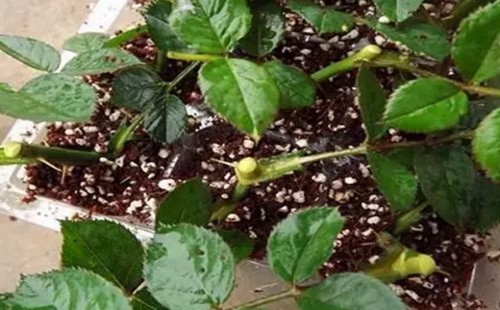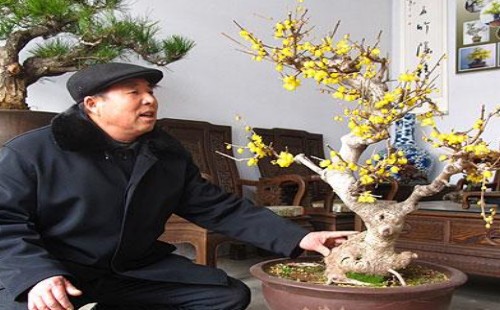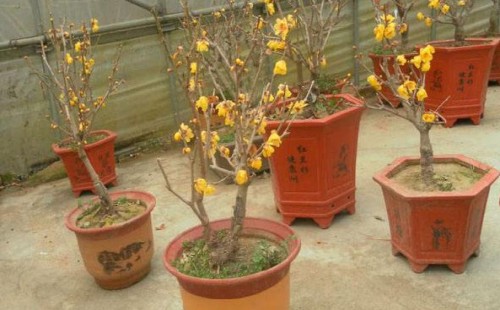How can summer roses be cut?
Rose has long been known as the queen of flowers, because the potted rose grows elegant and graceful, and its flowering period is very long, which can bloom from August of the first year to April of the next year. If you put several pots of rose on your balcony, it will undoubtedly become a beautiful scenery.

Rose not only blossoms gorgeously and has high ornamental value, but also has a relatively simple reproduction. Cuttings are often used to breed potted seedlings. In order to improve the survival rate, rose cuttage is usually carried out from September to October in autumn, because the temperature during this period is basically maintained between 20 ℃-25 ℃, which is very suitable for cutting, and the survival rate of cutting seedlings can even reach more than 95%. It can be seen that the survival rate of cutting rose is quite high when choosing the right season and cutting rose in the suitable environment.
So, can rose be cut in summer? As we all know, the temperature in summer can generally reach more than 30 ℃, and the sunlight is very strong, which can easily lead to cuttage failure due to high temperature and high heat. Because of this, many potted flowers and plants are not suitable for cutting propagation in summer.
Practice has proved that rose can be cut in spring, summer and autumn, although compared with the spring and autumn season, the temperature environment is more suitable, the light is too strong, cutting propagation has a higher survival rate. The summer temperature is often relatively high, cutting rose, the survival rate is often affected to a certain extent. However, it does not mean that cutting can not be carried out in summer, as long as we can provide a suitable cutting environment, rose can also be cut in summer. Next, the editor will share with you the cutting methods of rose in summer.
First of all, we need to choose the branches that grow stronger at the lower end of the flower as the cuttings, because the nutrients in the rose were concentrated to the top flowers and leaves, and after the flower fade, the nutrients will accumulate in the lower part of the plant. the main purpose is to promote the germination and growth of axillary buds and to continue the nutrients needed for the second round of flowering. Therefore, we should choose the branches below the flower as cuttings, so that the nutrition in the cuttings is more abundant, and the development is better, and the survival rate after cutting is relatively higher.
When cutting branches, the stem segments with 5-7 compound leaves are cut from the sturdy branches under the flowers as cuttings, and the original requires 2-3 bud eyes on the stem segments. Before cutting, the leaves on the stem need to be cut off to reduce the evaporation of water, because the leaves can evaporate a lot of water. Of course, the lowest part of the cuttings for cutting should be removed together with the petiole to avoid inserting the lower leaves into the substrate when cutting, otherwise it is easy to rot and breed germs.
Next, prepare a wet cutting substrate with appropriate thickness and strong permeability, and then insert the lower end of the cuttings into the substrate with a depth of between 30% and 40% of the cuttings. If cutting multi-branch cuttings, you need to pay attention to control the distance between cuttings. Then gently compact the moist soil around the cuttings. After the cuttage is finished, water can be watered once, and the cuttings can be placed in a cool place after adding plastic to avoid direct sunlight so as to reduce water evaporation.
Before the cuttings take root and sprout, we should not only avoid the light and ventilation, but also observe the dry and wet state of the basin soil. Because it is summer cuttage, the temperature is high and the water evaporates quickly, so it is recommended to spray water on the edge of the plastic cover once a day to maintain moisture, and to avoid the high temperature at noon during the day, and the water temperature can not form a big temperature difference with the ambient temperature. Do not open the plastic cover during this period, do a good job of spraying water to moisturize and avoid direct sunlight, so that you can take root and sprout smoothly for about 3-4 weeks.
After the cuttings take root, the plastic cover can be removed for air exchange, so good ventilation should be provided at this time. After taking root for 2 months, the seedlings can basically wait for the opportunity to transplant in the pot. Because at this time the cutting seedlings have grown to a certain height and have enough ability to cope with the external environment.
Time: 2019-06-07 Click:
- Prev

What kind of grafting does primrose use?
Primrose is a very important landscaping tree species in China, because of its high ornamental value, whether used to beautify the urban environment or to make bonsai, it is very durable. As a kind of bonsai tree species with outstanding ornamental effect, primrose is favored by bonsai lovers.
- Next

The planting method of Prunus mume seed
Prunus mume can breed potted seedlings by sowing, but sowing is generally the main way of large-scale production. It often takes a long time to cultivate sowing seedlings into rootstocks. As a family pot user, the sowing method is not desirable, but cuttings or grafting are often used to breed young plants.
Related
- Fuxing push coffee new agricultural production and marketing class: lack of small-scale processing plants
- Jujube rice field leisure farm deep ploughing Yilan for five years to create a space for organic food and play
- Nongyu Farm-A trial of organic papaya for brave women with advanced technology
- Four points for attention in the prevention and control of diseases and insect pests of edible fungi
- How to add nutrient solution to Edible Fungi
- Is there any good way to control edible fungus mites?
- Open Inoculation Technology of Edible Fungi
- Is there any clever way to use fertilizer for edible fungus in winter?
- What agents are used to kill the pathogens of edible fungi in the mushroom shed?
- Rapid drying of Edible Fungi

